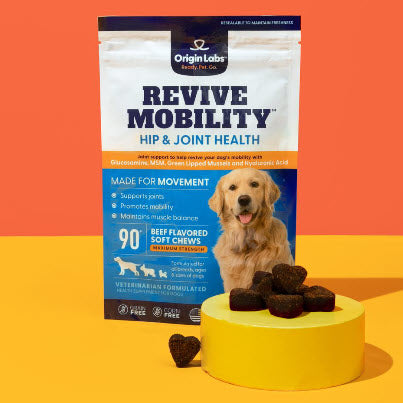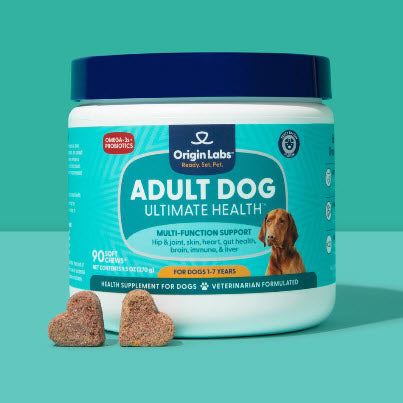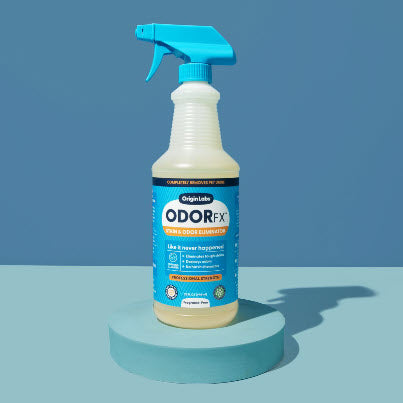Introduction
Can dogs have peppermint? This question often arises among pet owners concerned about their dog's diet. Understanding what foods are safe for dogs is crucial as it ensures their overall health and well-being. While some human foods can be beneficial for dogs, others can be harmful or even toxic.
When it comes to peppermint and dogs, opinions and advice vary significantly. Some believe that peppermint is entirely safe, while others caution against its use due to potential health risks. This article aims to uncover the surprising truth about dogs and peppermint, providing you with essential information to make informed decisions.
Ensuring a safe diet for your canine companion means being aware of both the benefits and dangers of various foods. By delving into the specifics of dogs and mint candy, we will explore whether this seemingly harmless treat could pose hidden risks.
Moreover, while addressing your dog's dietary needs, it's important to consider other aspects of their well-being as well. For instance, Ultimate Health chews from Origin Labs are an excellent option for adult dogs that provide tailored health support according to their age. Similarly, if you have a senior dog, you might want to consider hip & joint supplements specifically formulated for them. These supplements can significantly support your furry friend's overall health as they age.
Peppermint for Dogs: A Detailed Look
Exploration of the Safety Aspect
It's important to understand if peppermint is safe for dogs. While humans often enjoy peppermint as a refreshing herb, it can have different effects on our canine friends. Let's take a closer look at how peppermint affects dogs and what precautions we should take.
Clarification on the Misconception of Peppermint Toxicity in Dogs
There is a common belief that peppermint is toxic to dogs. However, this is not entirely true. The level of toxicity depends on the form of peppermint and the amount consumed. Fresh peppermint leaves in small quantities are generally safe for dogs. But when it comes to peppermint oil, we need to be extra cautious.
Other Dangerous Foods for Dogs to Be Aware Of
Peppermint oil isn't the only food that can harm dogs. Here are some other items to keep away from your furry friend:
- Chocolate: Contains theobromine which is toxic to dogs.
- Grapes and raisins: Can cause kidney failure.
- Onions and garlic: Harmful to a dog's red blood cells.
- Certain spices: While some spices are safe, others like certain essential oils can pose risks to dogs.
Discussion on the Potential Risks Associated with Peppermint Consumption in Dogs
The main risks of giving peppermint to dogs come from its essential oils. These oils can irritate a dog's skin and upset their stomach if consumed in large amounts.
Potential Risks Include:
- Gastrointestinal Upset: Vomiting and diarrhea are common symptoms.
- Skin Irritation: Direct contact with peppermint oil can cause redness and itching.
- Central Nervous System Issues: In extreme cases, ingestion can lead to tremors or lethargy.
Highlighting Specific Side Effects of Ingesting Peppermint Oil
If a dog accidentally ingests peppermint oil, they may experience certain side effects:
- Vomiting
- Diarrhea
- Drooling
- Lethargy
- Tremors
The severity of these symptoms depends on the amount of oil consumed and the size of the dog.
Case Study: Personal Experience with a Dog and Peppermint Sensitivity Issue
To understand the potential dangers of peppermint oil for dogs, let me share a real-life story about a dog named Max.
During the holiday season, Max came across some spilled peppermint oil from an aromatherapy diffuser. Within a few hours, he started showing signs of discomfort such as excessive drooling, vomiting, and unusual tiredness. His owner immediately took him to the vet, but it took several days for Max to fully recover from this incident.
This case emphasizes the importance of keeping substances like peppermint oil out of reach from our pets. Essential oil diffusers should be used cautiously around dogs and other pets.
For those looking into safer alternatives or supplements for their canine companions' health needs, checking out specialized products like [Ultimate Health
Peppermint Candy: A Sweet or Dangerous Treat for Dogs?
Peppermint candy might seem like a harmless treat, but it poses significant risks to our canine companions. While humans enjoy the refreshing taste and potential digestive benefits of peppermint candy, dogs react differently to some of its ingredients.
Why Peppermint Candy is Not Suitable for Dogs
Understanding why peppermint candy is not suitable for dogs is crucial in making informed decisions about your dog's diet. Here are the main reasons:
- Artificial Sweeteners: Many peppermint candies contain artificial sweeteners such as xylitol, which can be extremely harmful to dogs.
- High Sugar Content: Even traditional peppermint candies without artificial sweeteners are packed with sugar, leading to dental issues, obesity, and other health problems in dogs.
- Digestive Issues: The menthol in peppermint can cause gastrointestinal upset in dogs, leading to symptoms like vomiting and diarrhea.
The Dangers of Xylitol Found in Many Sugar-Free Candies
Xylitol is a common ingredient in sugar-free candies, including some brands of peppermint candy. It’s a sugar substitute that’s safe for human consumption but highly toxic to dogs. When ingested by dogs, xylitol can lead to rapid insulin release, causing a dangerous drop in blood sugar levels (hypoglycemia).
Key Facts About Xylitol:
- Toxic Dose: Even small amounts of xylitol can cause hypoglycemia in dogs. As little as 0.1 grams per kilogram of body weight can be toxic.
- Onset of Symptoms: Symptoms can appear within 30 minutes of ingestion but could also be delayed up to 12 hours.
Common Symptoms and Effects of Xylitol Poisoning in Dogs
Recognizing the symptoms of xylitol poisoning early can be lifesaving. Here are the immediate and severe symptoms to watch out for:
Immediate Symptoms:
- Vomiting: Often the first sign that something is wrong.
- Weakness and Lethargy: Due to the sudden drop in blood sugar levels.
- Loss of Coordination: Dogs may appear wobbly or stumble while walking.
Severe Symptoms:
- Seizures: A result of severe hypoglycemia if not treated promptly.
- Liver Failure: Ingesting large quantities can lead to liver damage or failure.
Case Study Insight:
Imagine finding your dog lethargic and unsteady after it got into your purse where you kept sugar-free gum containing xylitol. The immediate rush to the vet underscores the critical nature of recognizing these symptoms quickly.
Preventive Measures:
To keep your dog safe, here are some preventive measures you can take:
- Avoid Human Treats: Refrain from giving your dog any kind of candy or sweetened treats meant for humans.
- Secure Storage: Keep all products containing xylitol out of reach — this includes gums, candies, and even some baked goods.
Assessing the ingredients and understanding their effects on your pet's health ensures a safer environment for them. Knowledge about the severe consequences such as xylitol poisoning empowers responsible pet ownership.
Exploring Other Mint Varieties for Dogs
Safety of Fresh or Dried Peppermint Leaves for Dogs
Fresh or dried peppermint leaves are generally safe for dogs in small quantities. They can be a refreshing treat with a pleasant smell and some potential digestive benefits. However, it's important to remember to give them in moderation.
Benefits include:
- Aiding digestion: Small amounts might help alleviate mild stomach discomfort.
- Fresh breath: Chewing on peppermint leaves can temporarily freshen your dog's breath.
Risks to consider:
- Gastrointestinal upset: Large quantities can lead to digestive issues like vomiting or diarrhea.
- Allergic reactions: Some dogs may have sensitivities leading to symptoms such as itching or swelling.
Comparison with Other Mint Varieties
Different varieties of mint pose varying levels of safety for dogs. While peppermint is relatively safe, other types require more caution.
Spearmint:
- Safe in moderation: Spearmint leaves can also aid digestion and freshen breath. According to this article on dog nutrition, it is generally safe for dogs to consume spearmint in moderation.
- Higher risk in large amounts: Overconsumption might result in stomach upset similar to peppermint.
Wintergreen:
- Exercise caution: Wintergreen contains methyl salicylate, which is toxic to dogs in large quantities. Even small amounts might cause adverse effects.
Potential Toxicity Concerns with Pennyroyal Oil
Pennyroyal (Mentha pulegium) is another member of the mint family but comes with significant risks. Pennyroyal oil, in particular, poses severe health hazards for dogs.
Toxicity details:
- Highly toxic: Ingesting pennyroyal oil can lead to severe liver damage and even death.
- Symptoms of poisoning: Vomiting, lethargy, seizures, and liver failure are common signs of pennyroyal toxicity.
If there is any suspicion that a dog has ingested pennyroyal oil, it is crucial to seek veterinary consultation immediately. Prompt medical attention can make a life-saving difference.
Understanding the differences between various mint varieties empowers pet owners to make well-informed choices regarding their furry companions' diet. For more information on what dogs can eat, you can refer to this comprehensive guide on can dogs eat mint.
Consulting the Vet: Key to a Healthy Diet for Your Dog
Emphasizing the Importance of Veterinary Consultation for Dietary Concerns
Maintaining a healthy diet is crucial for your dog's well-being. While it might be tempting to share some of your favorite treats, such as peppermint, with your canine companion, professional veterinary help for dog's health is invaluable when it comes to dietary decisions.
Why Trusting a Veterinarian Matters
- Expertise in Animal Nutrition: Veterinarians possess specialized knowledge about animal nutrition that goes beyond common pet care advice. They understand the unique dietary requirements and potential hazards specific to dogs.
- Personalized Dietary Plans: Each dog is different, with varying health conditions, ages, and activity levels. A vet can provide tailored dietary recommendations that cater to your dog's specific needs.
- Preventing Health Issues: Consulting a vet before giving peppermint to a dog or introducing any new food can prevent potential health issues. Vets can identify ingredients that could cause allergies or digestive problems in your pet.
Role of Veterinarians in Ensuring a Dog's Overall Health and Well-being
Veterinarians play an essential role not just in emergencies but also in maintaining the overall health and happiness of your dog.
Regular Check-ups: The Foundation of Good Health
- Routine Examinations: Regular check-ups allow vets to monitor your dog's health over time, catching any issues early. These exams include assessments of weight, dental health, and more.
- Vaccinations and Preventatives: Keeping up with vaccinations and preventative treatments (like heartworm prevention) is critical. Vets ensure these are administered correctly and on schedule.
Addressing Specific Health Concerns
- Digestive Health: If you notice any changes in your dog's eating habits or digestive issues after consuming peppermint or other foods, a vet can diagnose the problem and recommend safe dietary adjustments.
- Allergies and Sensitivities: Some dogs may have allergies or sensitivities that require special diets. Vets can run tests to determine what foods should be avoided.
Practical Steps for Consulting Your Vet About Your Dog's Diet
Taking proactive steps will help you make the most out of your veterinary consultations regarding your dog’s diet:
- Prepare Questions: Before visiting the vet, prepare questions about specific foods like peppermint and broader dietary concerns.
- Keep a Food Diary: Document what your dog eats daily along with any symptoms they exhibit. This information can help vets make accurate diagnoses.
- Discuss Behavior Changes: Inform the vet about any changes in behavior or energy levels as these could be linked to diet.
- Follow Up Regularly: Schedule follow-up appointments to adjust dietary plans as needed based on your dog's evolving health status.
Real-life Examples: How Vets Have Made a Difference
Many pet owners have found significant improvements in their dogs' health by following veterinary advice:
"After consulting our vet about our dog's upset stomach issues, we discovered she had a sensitivity to certain herbs including peppermint. The vet recommended an alternative diet plan which greatly improved her condition." - Sarah M., Dog Owner
"Our senior dog was gaining weight despite being on a strict diet. The vet identified hidden ingredients in her food that were contributing to weight gain and helped us switch to a healthier option." - James L., Dog Owner
Prioritizing professional veterinary help for dog's health ensures you’re making informed decisions about what goes into their bowl every day.
Peppermint Alternatives for Dogs
Safe and Healthy Alternatives to Peppermint for Dogs
When thinking about safe foods for dogs, it's important to consider treats that are both free from potential risks and beneficial for their health. Here are some alternatives to peppermint that you can safely include in your dog's diet:
Carrots:
- Low in calories
- Excellent source of vitamins A, K, and fiber
- Crunchy texture helps clean teeth
- High in vitamins A and C
- Provide a good source of fiber
- Should be served without seeds and core
- Packed with antioxidants
- Rich in fiber and vitamins C and K
- Serve fresh or frozen as a cool treat
- Great source of fiber and beta-carotene (vitamin A)
- Helps with digestive health
- Can be served canned (pure pumpkin) or cooked fresh
Green Beans:
- Low in calories
- High in vitamins C, K, and manganese
- Can be served steamed or raw
Sweet Potatoes:
- Rich in dietary fiber, beta-carotene, and vitamins B6 and C
- Can be baked or dehydrated into chewy treats
Dog-Friendly Treats Without Potential Risks
For those looking to avoid the complications associated with peppermint while still providing tasty treats, consider the following dog-friendly treats:
- Peanut Butter: Make sure it is xylitol-free. Peanut butter is a favorite among dogs because of its flavor and texture.
- Bananas: These are high in potassium, vitamins, biotin, fiber, and copper. They should be given in moderation due to their sugar content.
- Cucumbers: Very low in calories, they offer plenty of hydration as well as vitamins K, C, and B1.
- Watermelon : Seedless watermelon is packed with hydration and is rich in vitamins A, B6, and C. Avoid the rind.
- Broccoli: When served in small quantities, broccoli can be an excellent source of vitamins C and K as well as fiber.
Homemade Dog Treat Ideas
Making your own dog treats gives you control over the ingredients and ensures they are safe for your dog. Here are some simple recipes:
Peanut Butter Oat Cookies
Ingredients:
- 1 cup natural peanut butter (xylitol-free)
- 2 cups old-fashioned oats
- 1 ripe banana
Instructions:
- Preheat oven to 350°F (175°C).
- Mash the banana in a bowl.
- Add peanut butter and oats; mix until combined.
- Roll mixture into small balls or use a cookie cutter.
- Place on baking sheet lined with parchment paper.
- Bake for 15 minutes or until golden brown.
Frozen Yogurt Treats
Ingredients:
- 1 cup plain Greek yogurt
- ½ cup blueberries
- ½ banana
Instructions:
- Blend all ingredients until smooth.
- Pour mixture into ice cube trays or silicone molds.
- Freeze for several hours until solid.
These homemade options provide alternative treats for dogs that can be enjoyed without any risk associated with peppermint.
Introducing New Treats
When adding new foods or treats to your dog's diet, introduce them gradually to watch for any negative reactions or sensitivities. Offering these safe alternatives not only improves your dog's nutrition but also adds variety to their treat routine, keeping them excited about snack time.
By choosing from this list of healthy alternatives, you ensure that your furry friend enjoys delicious snacks while staying healthy.
Final Thoughts on Dogs and Peppermint
Understanding whether dogs can safely consume peppermint is crucial for any responsible pet owner. The surprising truth is that while small amounts of fresh or dried peppermint leaves might be safe, peppermint oil and candy can pose significant risks.
Key Takeaways:
- Peppermint Oil Risks: Ingesting peppermint oil can lead to serious side effects such as gastrointestinal distress or liver damage.
- Peppermint Candy Dangers: Sugar-free candies often contain xylitol, which is extremely toxic to dogs.
Encouraging responsible pet ownership means always choosing foods that are safe for your dog. Consulting a veterinarian about introducing any new food into your dog’s diet ensures their health and well-being are prioritized.
By selecting appropriate treats and being mindful of potential hazards, you contribute to a happier, healthier life for your furry friend.
FAQs (Frequently Asked Questions)
Can dogs have peppermint?
Yes, dogs can have peppermint in moderation. However, it's important to be mindful of the quantity and frequency of consumption to avoid any potential risks.
Is peppermint candy safe for dogs?
No, peppermint candy is not safe for dogs, especially those that contain xylitol. Xylitol can be toxic to dogs and should be avoided at all costs.
What are the potential risks of peppermint for dogs?
The potential risks of peppermint for dogs include digestive issues, allergic reactions, and sensitivity to peppermint oil. It's important to monitor your dog's response to peppermint and consult a vet if you have any concerns.
Are there alternative treats for dogs instead of peppermint?
Yes, there are plenty of safe and healthy alternative treats for dogs, such as carrots, apples, and plain cooked meats. These alternatives can be enjoyed by dogs without the potential risks associated with peppermint.
Why is consulting a vet important before giving peppermint to a dog?
Consulting a vet before giving peppermint to a dog is crucial because they can provide personalized advice based on your dog's health condition, age, and any potential sensitivities or allergies. Veterinarians play a key role in ensuring a dog's overall health and well-being.
What is the surprising truth about dogs and peppermint consumption?
The surprising truth about dogs and peppermint consumption is that while it can be safe in moderation, there are potential risks and sensitivities that dog owners need to be aware of. Responsible pet ownership involves choosing appropriate foods for dogs and being mindful of their dietary needs.








